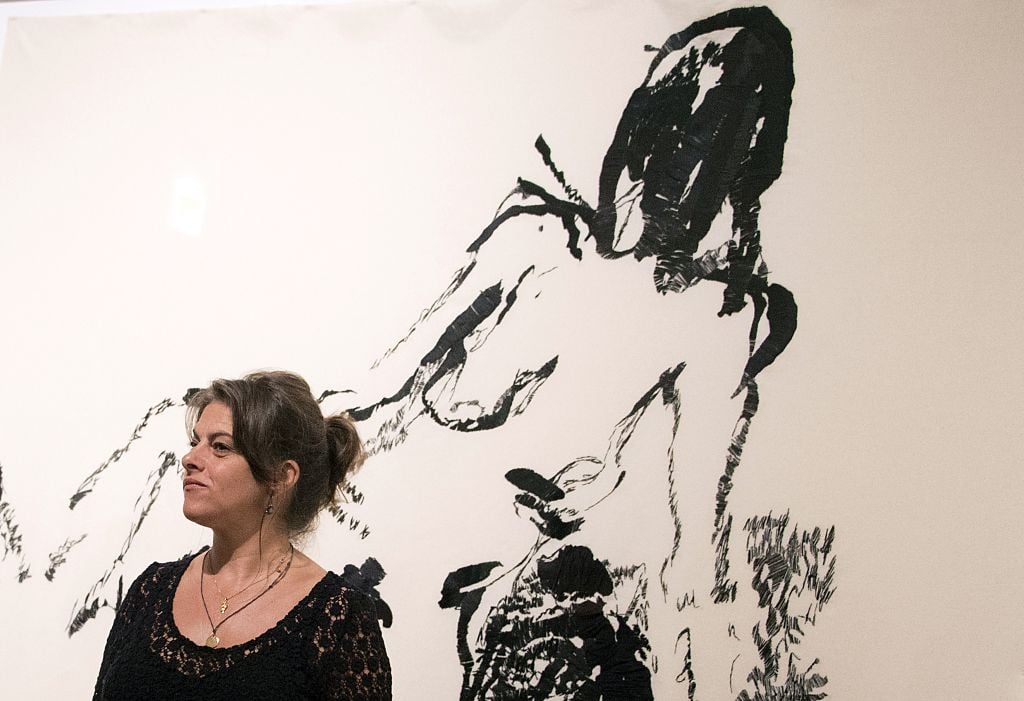
Do you, Tracey Emin, take this stone to be your husband? Yes, she really married a stone, “a big fucking stone,” as she told the South China Morning Post—in a romantic ceremony in the south of France. The ceremony was so moving that it inspired a whole series of new works now on view at White Cube and Lehmann Maupin in Hong Kong.
The artist found a ring last summer and wore it on her left ring finger. However, Emin’s superstitious side felt like she shouldn’t wear a wedding ring without actually having married. Seeing as there was nobody else around, she married a stone. Job done.
Tracey Emin, “I Cried Because I Love You” installation view at Lehmann Maupin, Hong Kong.
Photo: Kitmin Lee, courtesy of the artist and Lehmann Maupin and White Cube
“I thought the stone is so majestic and beautiful, I really do love the stone,” Emin said at a press conference ahead of the Hong Kong exhibition opening, SCMP reported.
“And then I thought about the way I love, how I pour love into things and people whatever it is, passionately, but not expecting it to be returned either. I just accept that’s the way it is, it’s just me who gives,” Emin added. “The stone becomes a metaphor for my feeling.”
In an interview with the Chinese daily the artist clarified that the it signifies stability in her well-publicized tumultuous life. “The other thing with the stone is it’s not going anywhere. Even if there’s the biggest fucking tsunami in the whole fucking world, the stone will probably still stay there.”
Tracey Emin, “I Cried Because I Love You” Installation view at Lehmann Maupin, Hong Kong.
Photo: Kitmin Lee, courtesy of the artist and Lehmann Maupin and White Cube.
“Maybe it’s not a person,” she said. “But maybe it’s an anchor for me, something I can identify with. No matter how mad my life might be or what may happen that stone is stability and comfort.”
The stone, however, is not to be confused with a rock. Emin deliberately makes the distinction between the two in the exhibition catalogue. A stone “is here forever,” whilst a rock “has been made by things that cut it away.”